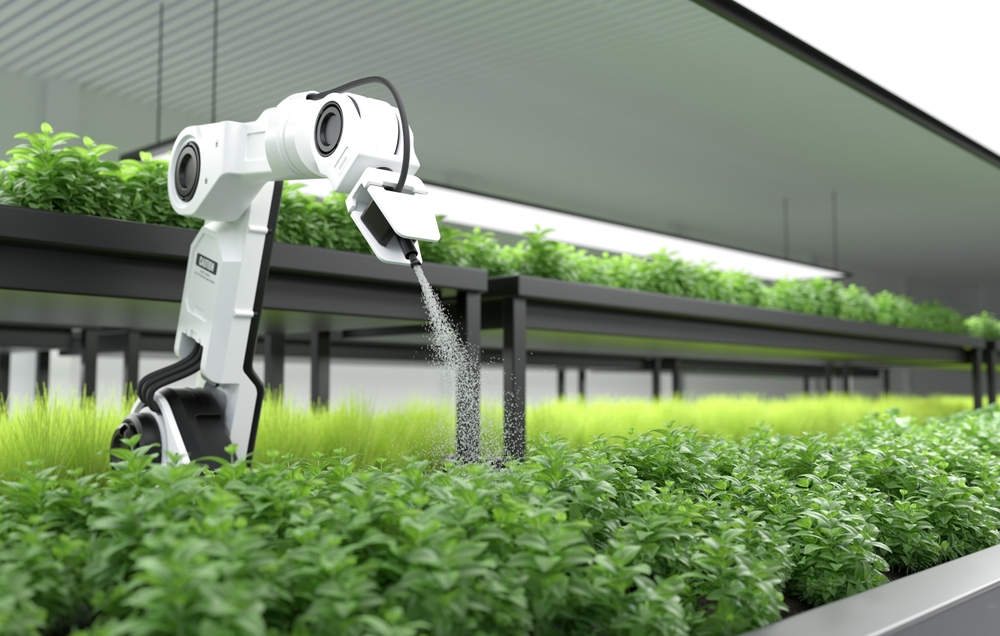The world of agriculture is undergoing a significant transformation with the integration of robots and artificial intelligence (AI). The use of robots in agriculture, also known as agricultural robotics, is revolutionizing the way farmers cultivate and harvest crops, raising livestock, and manage their farms. This innovative technology is enhancing efficiency, productivity, and reducing labor costs, making it an attractive option for farmers and agricultural businesses. In this article, we will delve into the world of robot application in agriculture, exploring its benefits, challenges, and future prospects.

History of Agricultural Robotics
The concept of agricultural robotics dates back to the 1960s, when the first automated farming systems were developed. However, it wasn’t until the 1990s that the technology began to gain traction, with the introduction of GPS-guided tractors and combines. Since then, the field has evolved rapidly, with advancements in robotics, AI, and sensor technologies. Today, agricultural robotics encompasses a wide range of applications, from autonomous tractors and drones to robotic harvesters and crop monitoring systems.
Benefits of Agricultural Robotics
The integration of robots in agriculture offers numerous benefits, including:
- Increased Efficiency: Robots can perform tasks faster and more accurately than humans, reducing labor costs and improving productivity.
- Improved Crop Yields: Precision farming techniques, enabled by robots, can optimize crop growth, reduce waste, and promote sustainable agriculture practices.
- Enhanced Safety: Robots can perform tasks that are hazardous or difficult for humans, such as handling chemicals or working in extreme weather conditions.
- Data-Driven Decision Making: Robots can collect and analyze data on soil conditions, crop health, and weather patterns, providing valuable insights for farmers to make informed decisions.
- Reduced Environmental Impact: Robots can help minimize the use of chemicals, water, and energy, promoting sustainable agriculture practices and reducing the environmental footprint of farming.
Applications of Agricultural Robotics
Agricultural robots are being used in a variety of applications, including:
- Autonomous Tractors: Self-driving tractors can perform tasks such as planting, spraying, and harvesting, reducing labor costs and improving efficiency.
- Drones: Unmanned aerial vehicles (UAVs) can monitor crop health, detect pests and diseases, and apply targeted treatments.
- Robotic Harvesters: Robots can harvest crops such as fruits, vegetables, and nuts, reducing labor costs and improving yield.
- Crop Monitoring Systems: Sensors and cameras can monitor crop growth, detect issues, and provide real-time data to farmers.
- Livestock Management: Robots can monitor and manage livestock, including feeding, breeding, and health monitoring.
Challenges and Limitations
While agricultural robotics offers numerous benefits, there are also challenges and limitations to consider:
- High Initial Investment: The cost of purchasing and maintaining agricultural robots can be prohibitively expensive for small-scale farmers.
- Limited Accessibility: Agricultural robots may not be accessible to farmers in developing countries or those with limited resources.
- Technical Issues: Robots can be prone to technical issues, such as software glitches or hardware failures, which can impact their effectiveness.
- Data Management: The large amounts of data generated by agricultural robots can be overwhelming, requiring specialized software and expertise to analyze and interpret.
- Regulatory Framework: The regulatory framework for agricultural robotics is still evolving, and there may be concerns around safety, liability, and intellectual property.
Future Prospects
Despite the challenges and limitations, the future of agricultural robotics looks promising. As technology continues to advance, we can expect to see:
- Increased Adoption: More farmers and agricultural businesses will adopt agricultural robotics, driven by the benefits of increased efficiency, productivity, and reduced labor costs.
- Improved Affordability: The cost of agricultural robots is expected to decrease, making them more accessible to small-scale farmers and developing countries.
- Advancements in AI: AI will play a more significant role in agricultural robotics, enabling robots to learn, adapt, and make decisions autonomously.
- Integration with Other Technologies: Agricultural robots will be integrated with other technologies, such as blockchain, IoT, and satellite imaging, to create more comprehensive and efficient farming systems.
- Sustainable Agriculture: Agricultural robotics will promote sustainable agriculture practices, reducing the environmental impact of farming and promoting eco-friendly farming methods.
FAQs
- What is agricultural robotics?
Agricultural robotics refers to the use of robots and artificial intelligence (AI) in agriculture to enhance efficiency, productivity, and reduce labor costs. - What are the benefits of agricultural robotics?
The benefits of agricultural robotics include increased efficiency, improved crop yields, enhanced safety, data-driven decision making, and reduced environmental impact. - What are the applications of agricultural robotics?
Agricultural robots are being used in a variety of applications, including autonomous tractors, drones, robotic harvesters, crop monitoring systems, and livestock management. - What are the challenges and limitations of agricultural robotics?
The challenges and limitations of agricultural robotics include high initial investment, limited accessibility, technical issues, data management, and regulatory framework. - What is the future of agricultural robotics?
The future of agricultural robotics looks promising, with increased adoption, improved affordability, advancements in AI, integration with other technologies, and promotion of sustainable agriculture practices.
Conclusion
The integration of robots in agriculture is revolutionizing the way farmers cultivate and harvest crops, raise livestock, and manage their farms. Agricultural robotics offers numerous benefits, including increased efficiency, improved crop yields, enhanced safety, and reduced environmental impact. While there are challenges and limitations to consider, the future of agricultural robotics looks promising, with advancements in AI, integration with other technologies, and promotion of sustainable agriculture practices. As the world’s population continues to grow, the need for efficient, productive, and sustainable agricultural practices will become increasingly important. Agricultural robotics is poised to play a vital role in meeting this challenge, and we can expect to see significant advancements in this field in the years to come.
Closure
Thus, we hope this article has provided valuable insights into The Rise of Robot Application in Agriculture: Enhancing Efficiency and Productivity. We hope you find this article informative and beneficial. See you in our next article!
